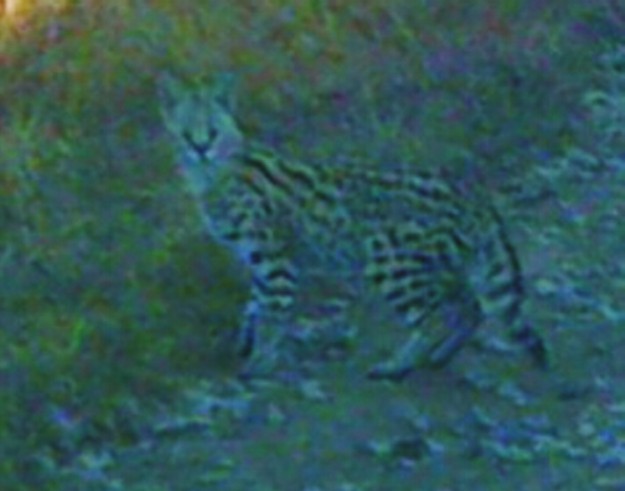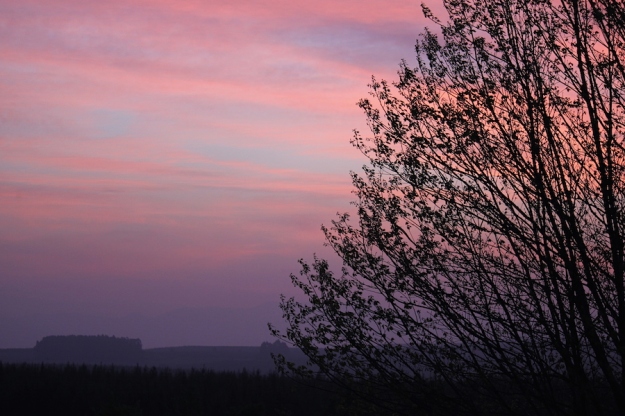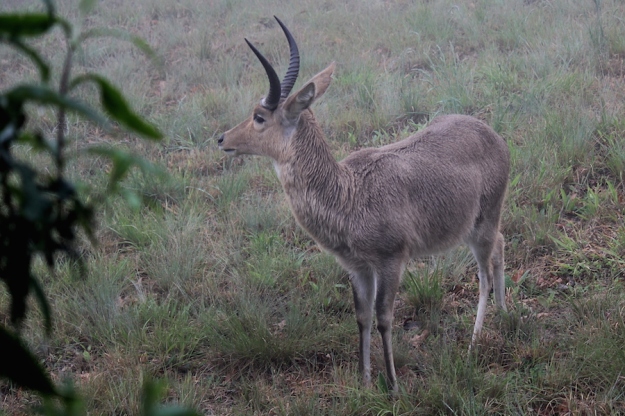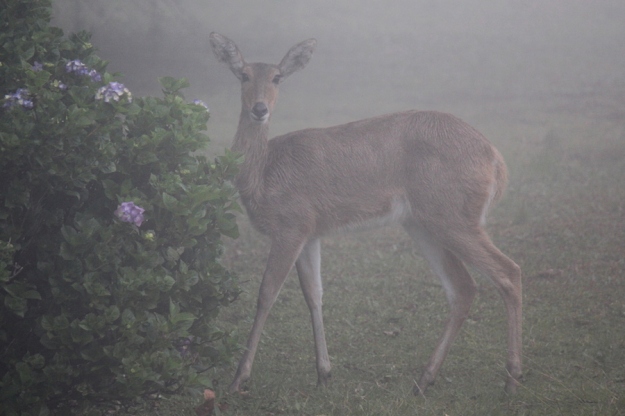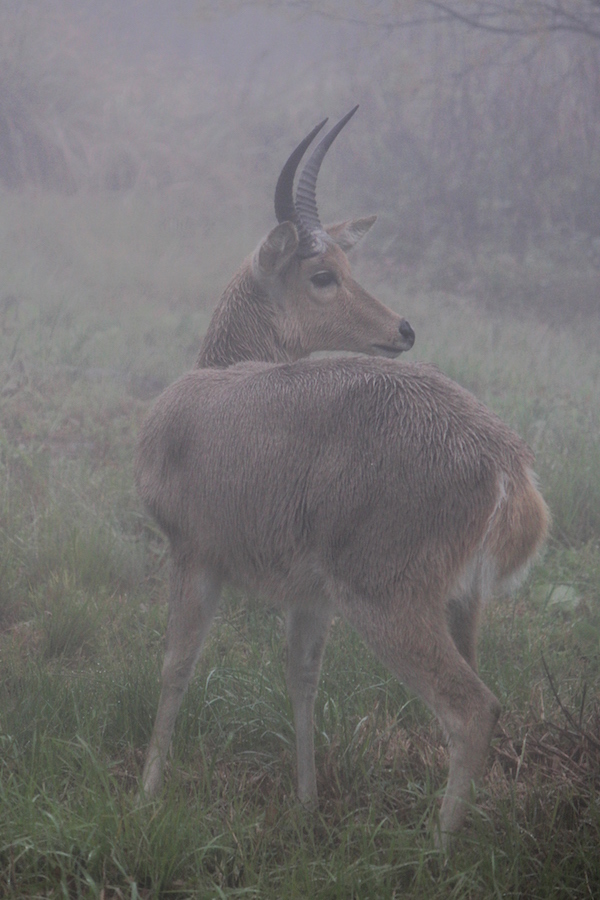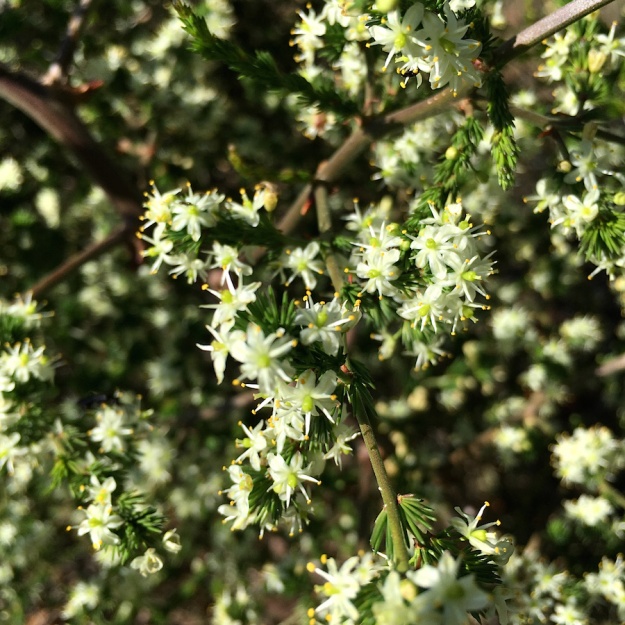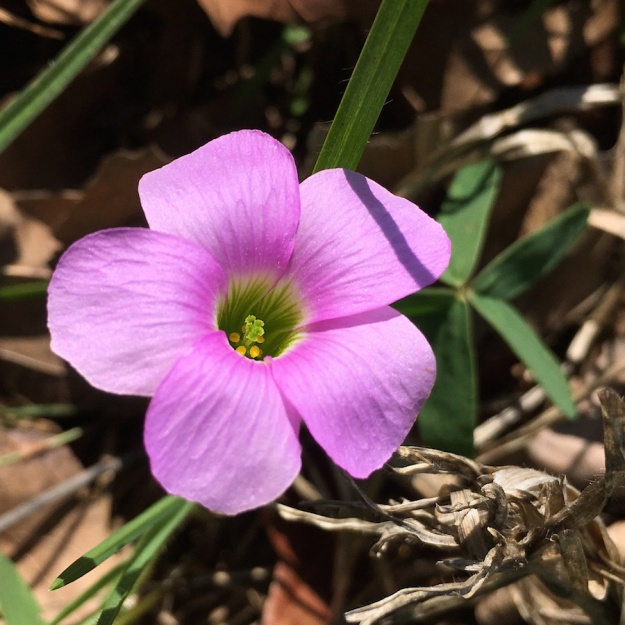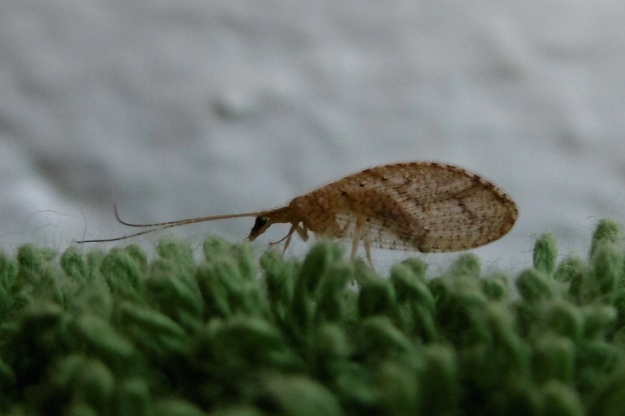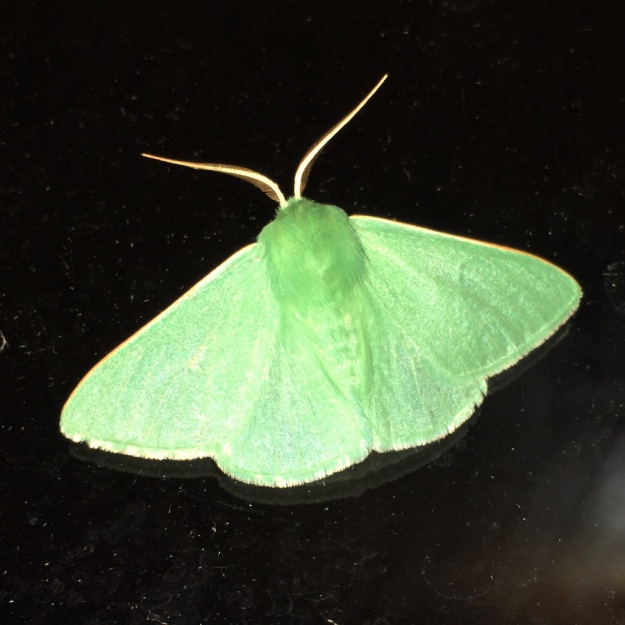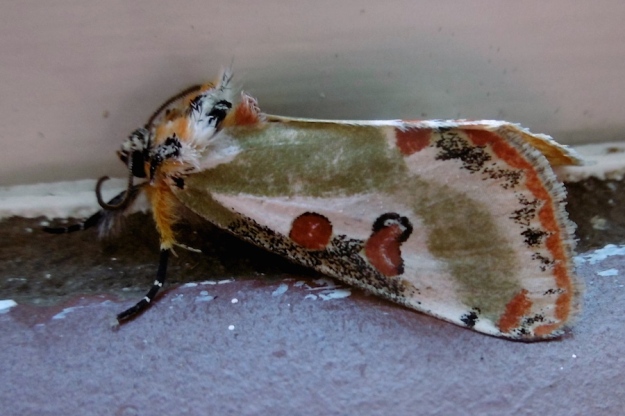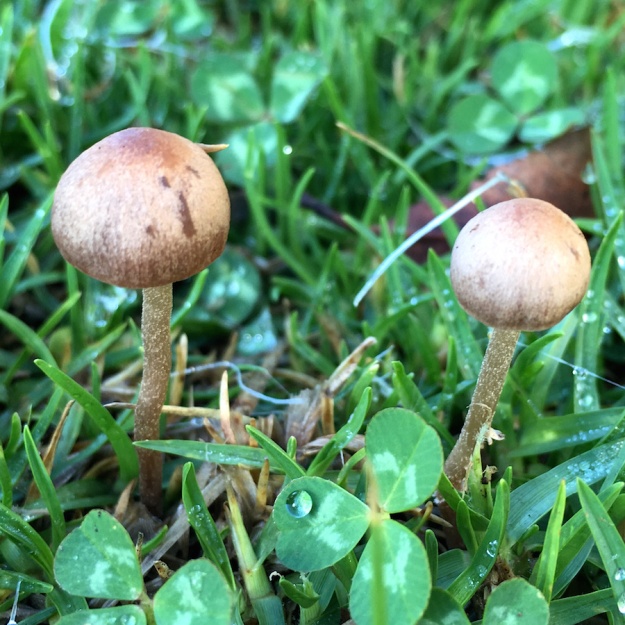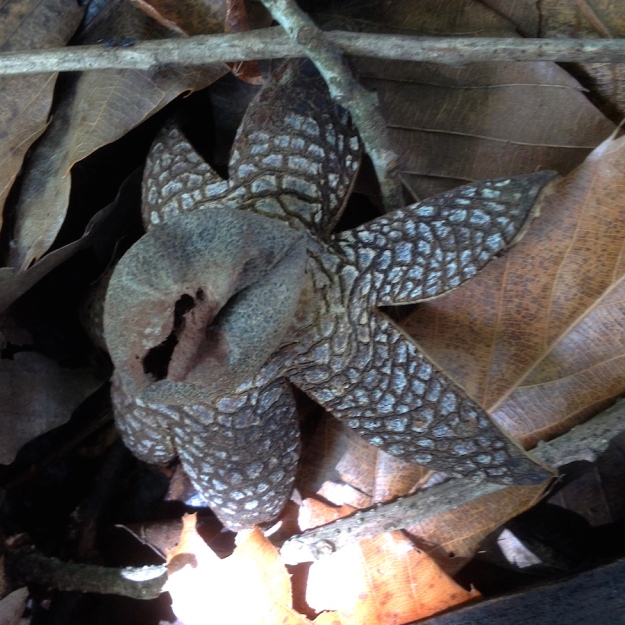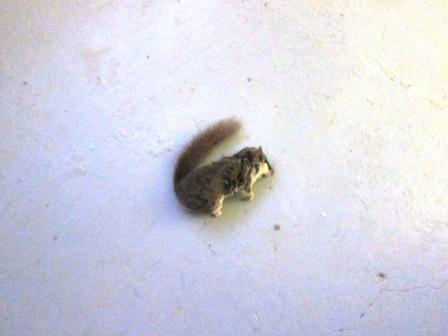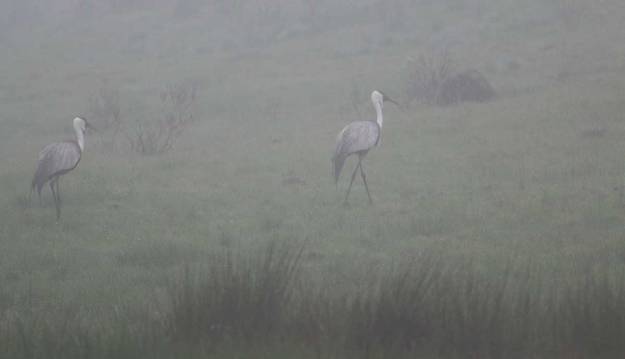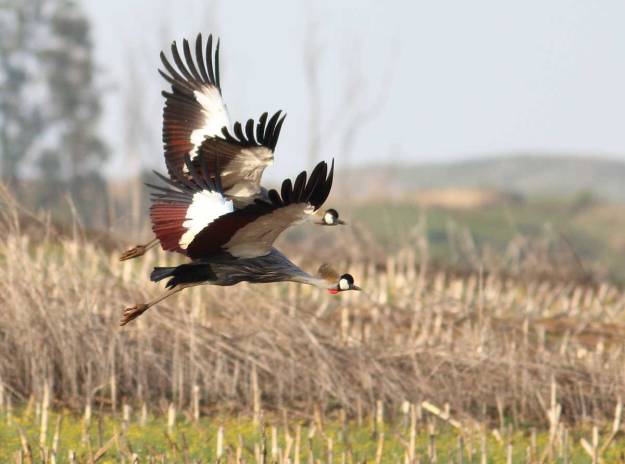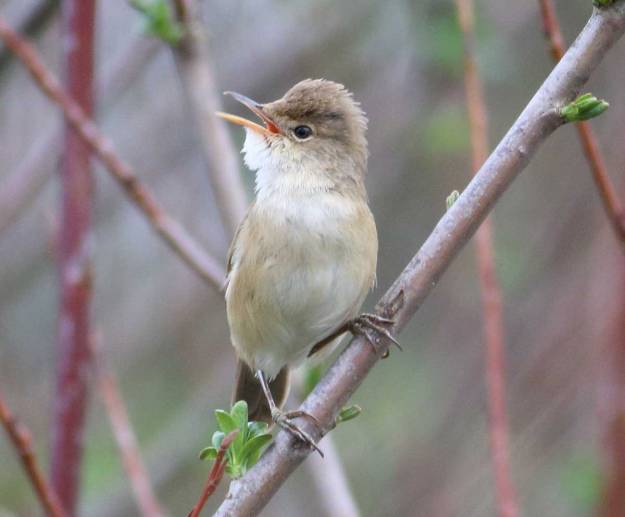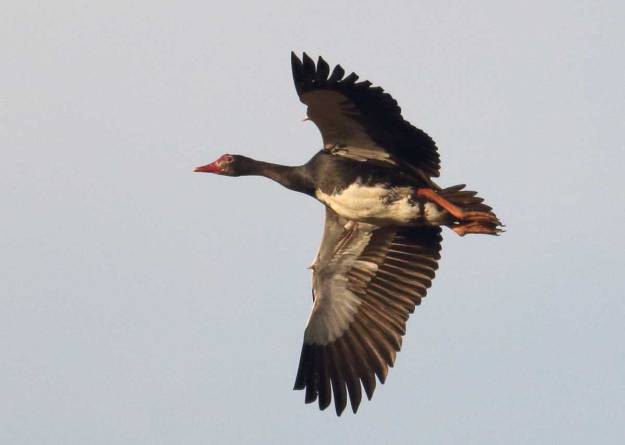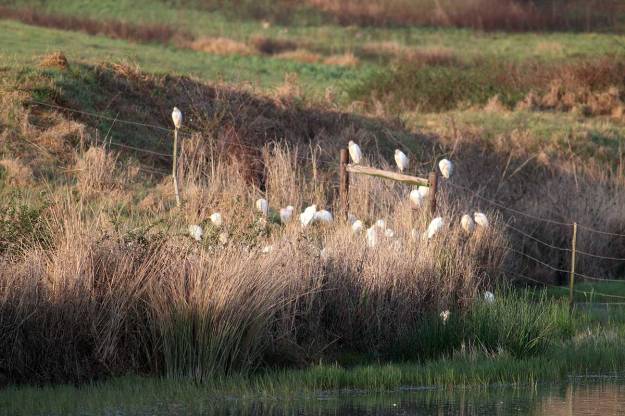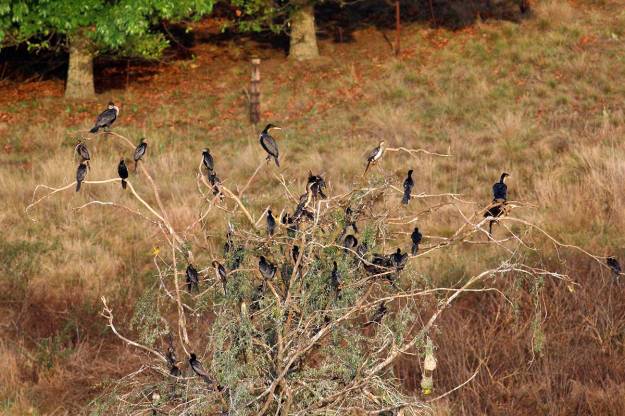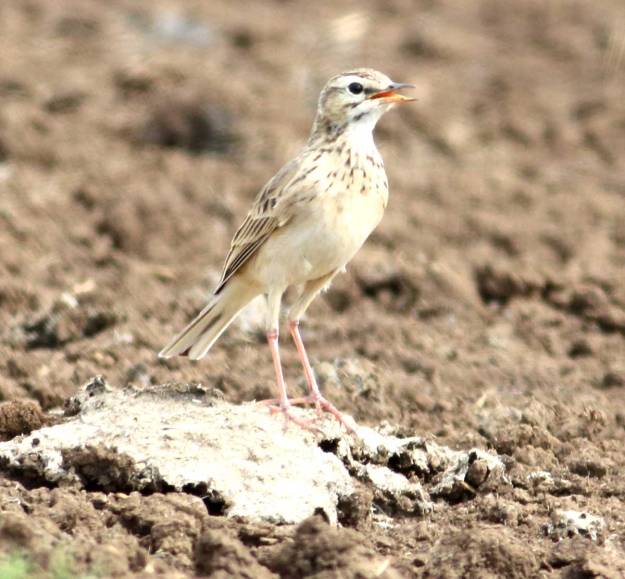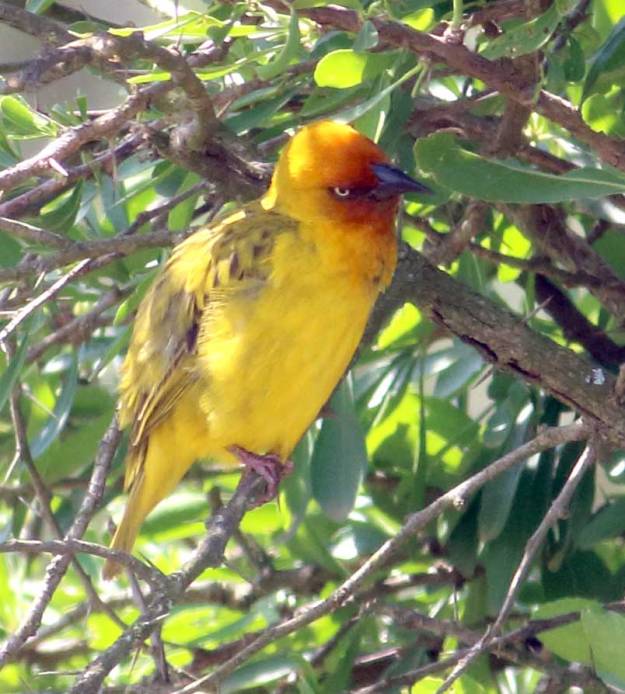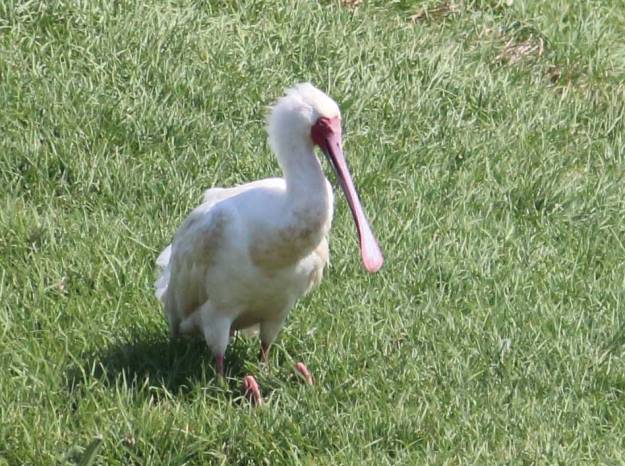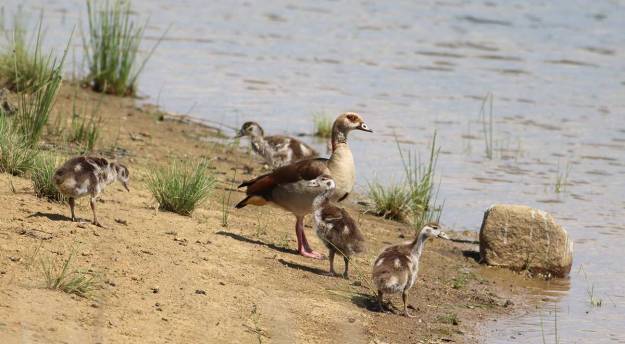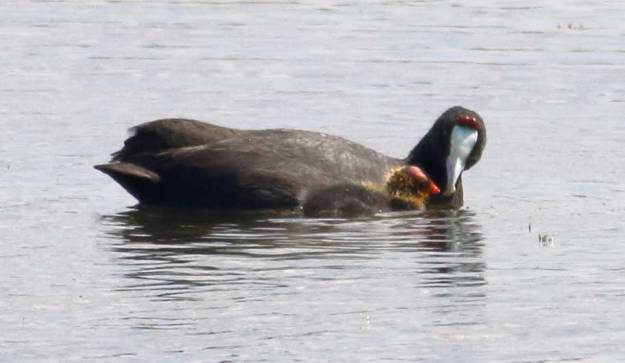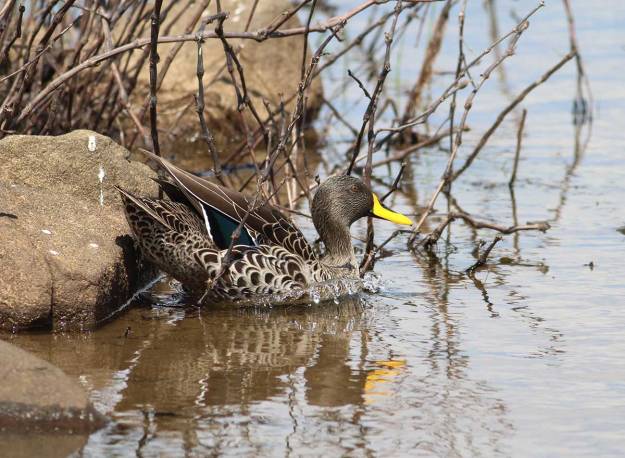Spring has brought a myriad of things for us all to look at. Beautiful blooms appearing on the trees as well as new leaves starting to shoot, loads of animal and bird life out and about, as well as a rain spider desperately trying to bring us all some respite after these dry few months. Here’s hoping the rain comes soon…
Brandon Powell – Bukamanzi
This month I haven’t seen anything very LARGE except for this mad rain spider (Palystes) – he hadn’t heard about us not having had any lately. He crept out of my watering-can after I had done about ten trips with it overflowing its brim. Hopefully he’ll stick around and devour some of my jumping spiders?
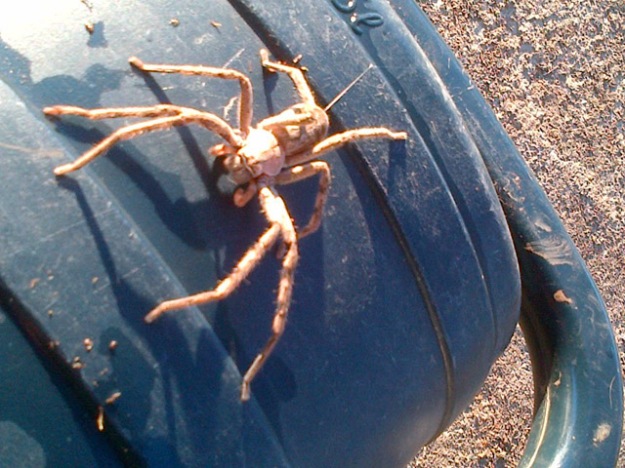
Things are looking very sad and khaki except for Jenny Stipcich’s proteas and new grass shoots struggling through the fire-breaks.
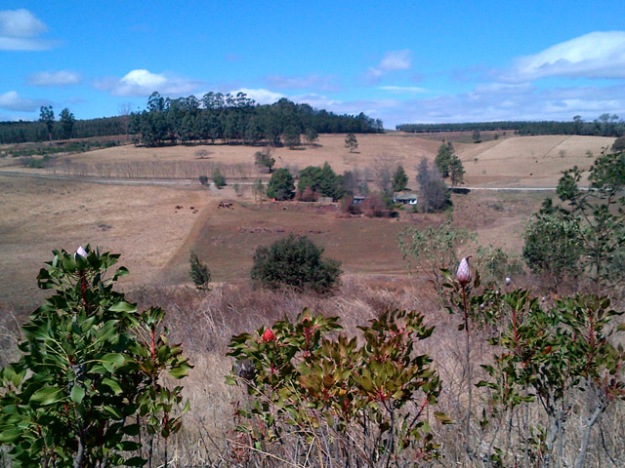
On the Conservancy’s camera I caught several clips of wonderful, leaf-munching duiker, usually alone but once in a pair. A very beautiful foxy-faced genet has also been cutting ’round the place. I’ve scrubbed down my door-steps with clove oil in the hope that one doesn’t have any melodramatic snake sightings as winter draws to its close!
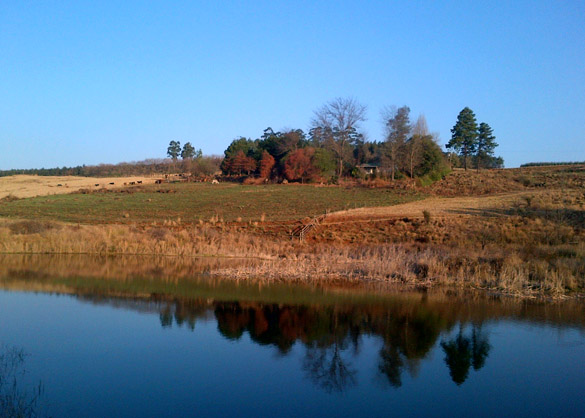
Ashley Crookes – Copperleigh Farm
Wild flowers that have now started popping up all over the place. Ledebouria
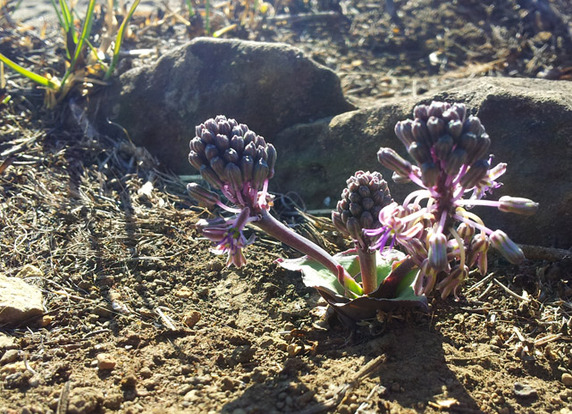
Helichrysum
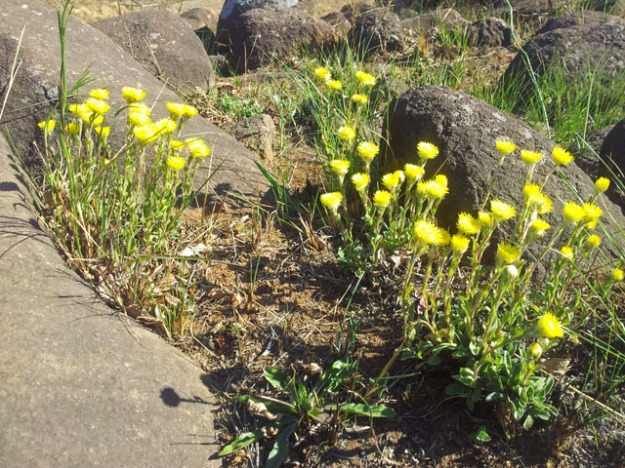
Senecio speciosus
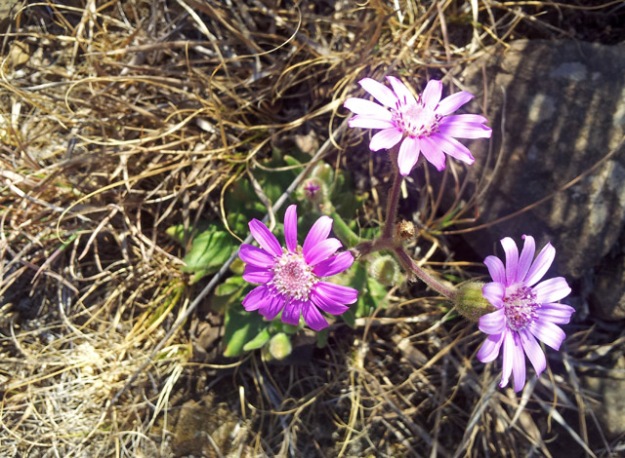
We also had about 16 Guinea Fowl appearing back on our farm aound the sheep camps after disappearing for a good few months. They were also calling the rain and are welcome back!
Nikki Brighton – Old Kilgobbin Farm
Saw the first Yellow-billed Kite on 19 August. Afternoon walks are a real delight where paths are mown through the tall golden grass.
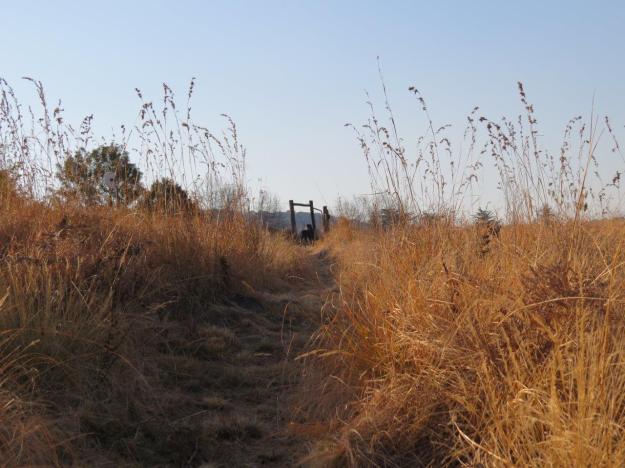
This magnificent Yellowwood on the edge of the forest can be seen for miles.
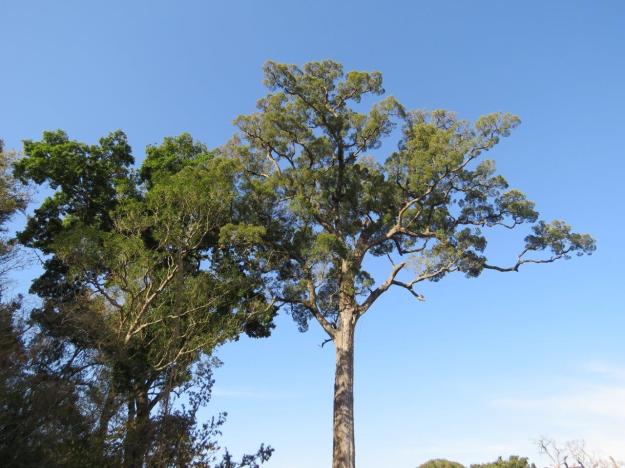
Interesting reflections in cold pools, where there is just a little water left.

N3TC brought a group of media people to visit the Midlands and we took them for a walk in the forest. Barend had them enthralled.
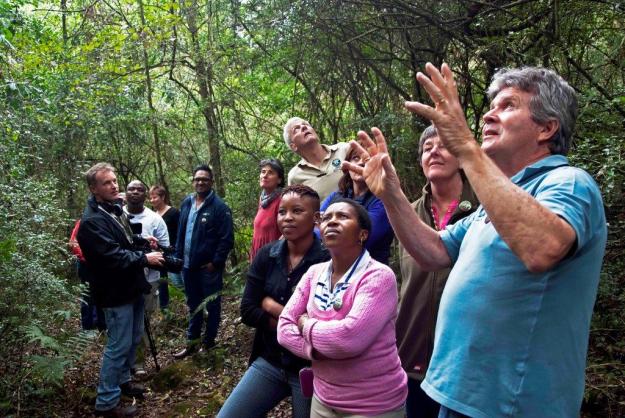
Anita Heyl said “I absolutely loved, loved, loved the time spent with your group! Oh, my goodness what a special piece of paradise. I do hope to visit again soon and spend proper quiet time there. If I was Winnie-the-Pooh that would most definitely have been my part of the forest.”

Our forest even made the morning news on SABC! Watch the film clip here: www.youtube.com/watch?v=G3yIKpWoRxs
Anne and Mike Weeden – Hopedale Farm
The other morning at around 11 o’clock we spotted an African Striped Weasel on the fire break close to the house. We walked to within about 5 metres of it and it was totally unconcerned about our presence. Unfortunately I didn’t have my camera with me but it was definitely a weasel rather than a polecat as it had a solid white patch on top of its head and lacked the white markings under its eyes.
Pat and Sandra Merrick – Albury Farm
Dr Amy-Leigh Shuttleworth (nee Wilson) came to the farm during the month and Pat took her to 4 burrows. Unfortunately, they all seem to be empty of aardvarks. The one we had last year has vanished perhaps due to lack of termites in the area where he dug.
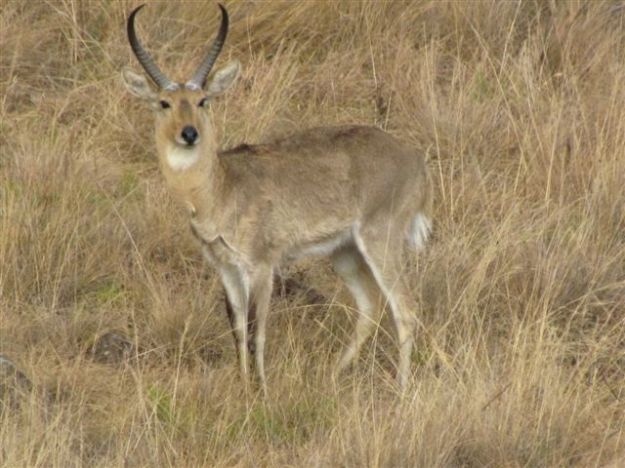
Have seen a number of reed buck this month. One evening as many as ten on the burn, just driving up to my house in an area of 1km. There are always 2 males.
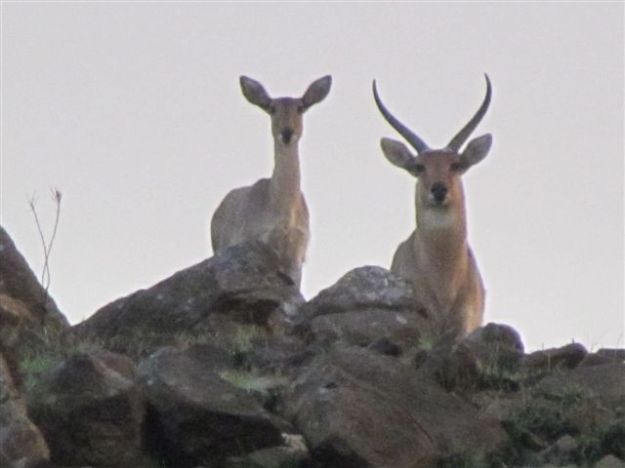
One stands some distance away and the other one mingles with the females and youngsters. These are the same 2 that were fighting some months ago. A number of male and female duiker.
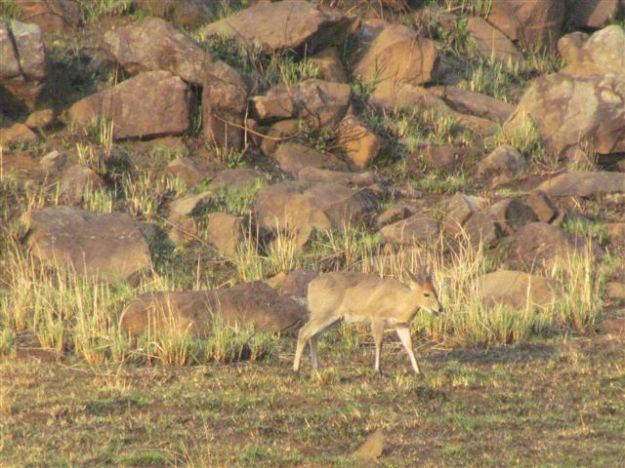
Seen female oribi quite often. She seems to keep to the long grass and on occassion see her nibbling the green burn.
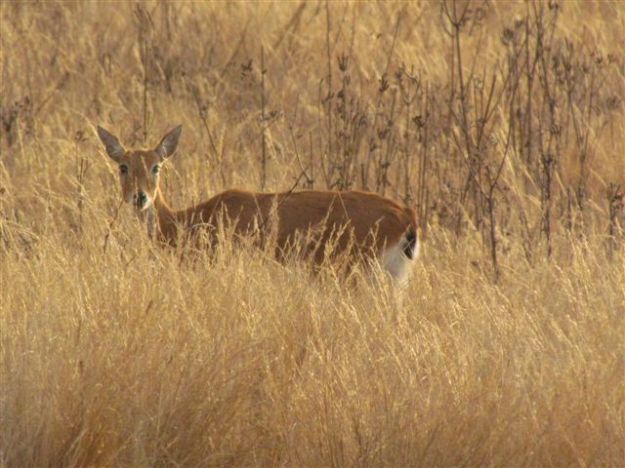
Saw and heard a pair of jackal buzzards – their cry reverberated for an hour one morning. Our 2 blue crane arrived at the dry dam one morning. Haven’t seen them since. Hear them occasionally. Saw 2 yellowbilled kites for the 1st time on 10th August. Saw a pied kingfisher pick up a frog from our pond. He flew to the dead tree where he pounded it to death with his beak and then swallowed it.
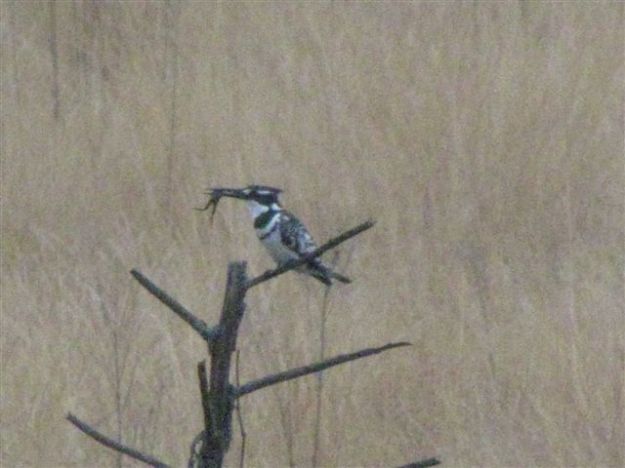
A pair of gymnogene flew over the house early one morning. Heard a very loud peeu cry one morning – went on for ages – I eventually tracked it to the hollow pole next to the gate where a red throated wryneck was calling for attention. This is the second one we have on the farm. The other one is in a hollow pole half way down our driveway.
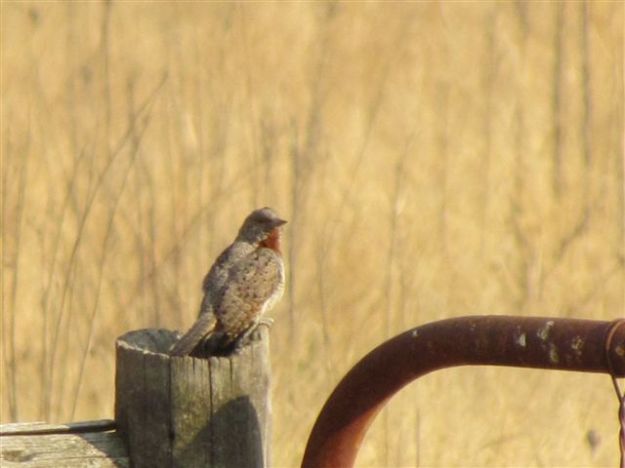
Early one morning, Pat heard a freckled night jar in the trees behind the house. The siting of the month for me was seeing and photographing a spotted eagle owlet and adult – not sure if male or female, but I am sure someone will advise me.
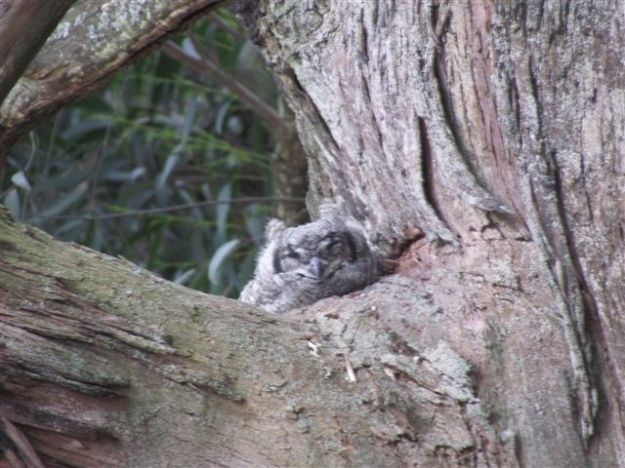
Pat had been walking around the gum trees looking for the sparrowhawks when he heard a loud hooting from the ground. On investigation it looked like the owlet had fallen out the tree and one of the adults was on the ground with it and the other was hooting high above in the tree.
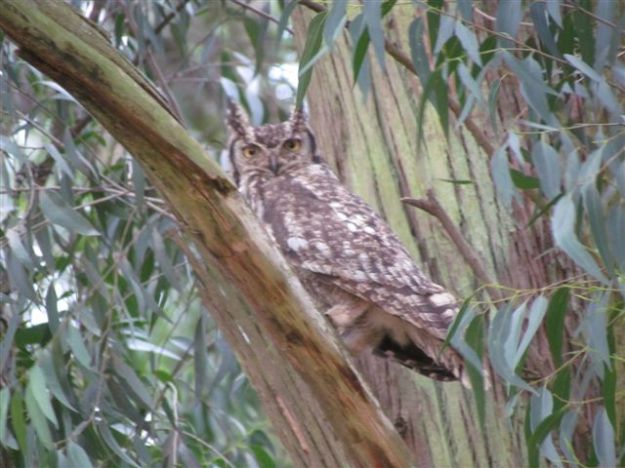
Pat left them as had the dogs with him. The next day he again went looking for them and found the owlet in the fork of a gum tree and mom/dad nearby on the branch of a tree. Pat phoned me and told me to come post haste with my camera which I did. Got some lovely snaps. The adult was not too happy and screeched loudly, while the other one which I could not see was hooting higher up. We left them after a few minutes. When I walk down through the gum tree avenue I see one of them flying through the canopy.
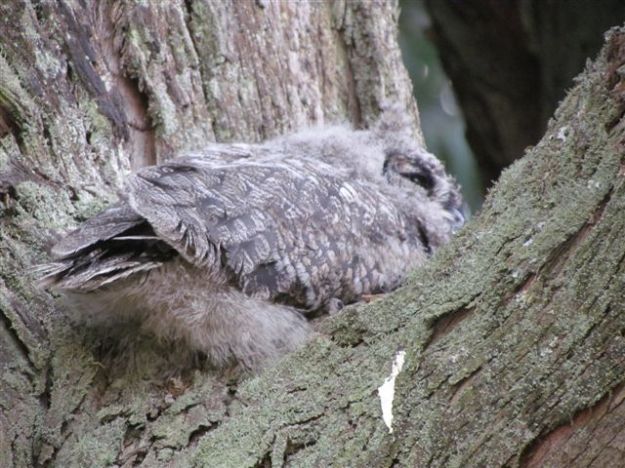
So now its egyptian geese, black sparrowhawks and spotted eagle owls flying through the canopy.
Our sparrowhawks left the nest on 26th July. A pair of egyptian geese took over straight away. Early in the mornings and late afternoons would see the sparrowhawk youngsters sitting on a dead gum tree probably waiting for their food, as saw three sitting on same tree late one afternoon. But for the past 2 weeks they have been flying around the canopy of the gums. When I walk around that area, they fly through the canopy and screech loudly. We have seen the adults fly past the house from Dargle side late in the afternoons carrying a bird. Quite large, so presumably a dove.
Dr Ian Little of the EWT Threatened Grasslands Programme commented on my sparrowhawk story last month. I was wrong about a number of things. This is his letter:
Just a quick clarification on Pat and Sandra Merrick’s wonderful sightings with the Black Sparrowhawks. The Male is not rufous coloured, they were in fact looking at one of the juveniles, the male is the same colour as the female but smaller. He delivers food to the female to take to the nest and hence is not often seen at the nest. Thanks for the great pics, now to answer your questions:
How old would you say they are now and is it possible to tell if they are male or female? They must be about 6-8 weeks now, They leave the actual nest at about 35-40 days after hatching. Juveniles are both rufous the only way to tell the sex is by their size. By 30 days they are fully grown and the males are almost half the size of the females. Your confusion is that I think your two youngsters are both females and hence same size.
Are they still being fed by the adults and how long does that go on for? They are fed by the adults for another 1-2 months so yes at this stage they are still being fed by the adults. You very seldom see both adults at the nest as the male provides most food but he will clean the food (remove feathers) away from the nest and then pass the food to the female who brings it in to feed the young.
There is also one more bit of confusion that can crop up. Black Spars (as I call them) come in two colour morphs. What you have are the standard colour morphs but adults can be pitch black with no white on the stomach and juveniles can be pure white with black flecks as opposed to the rufous colour which you have seen here. Anyway, no need to add further confusion. Basic rule of thumb, if it’s rufous it’s juvenile, if it’s Black and white it’s adult and females are almost twice the size of males.

Other birds we have seen include: Black headed Oriel
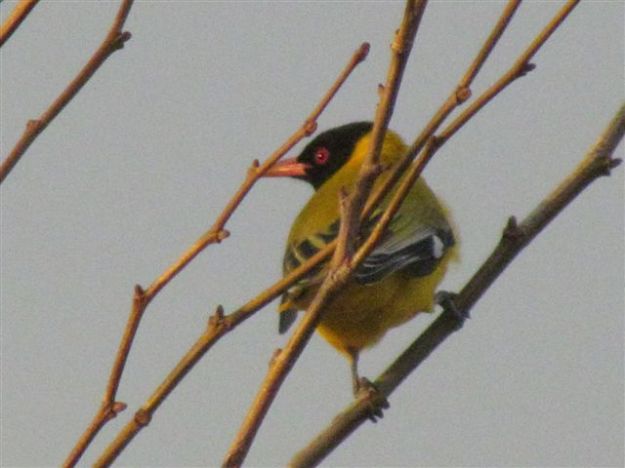
Common Stonechat
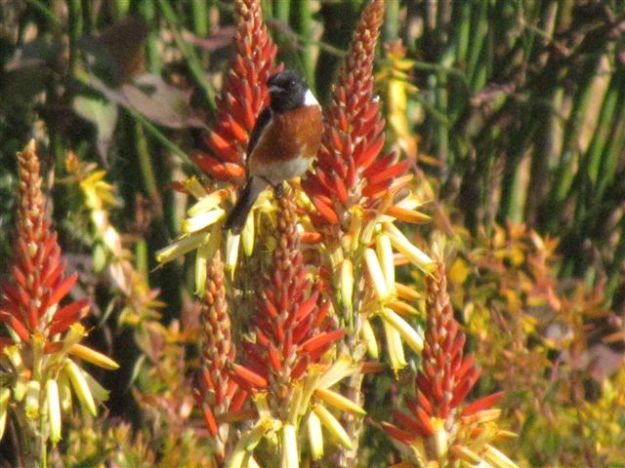
Drakensberg Prinia
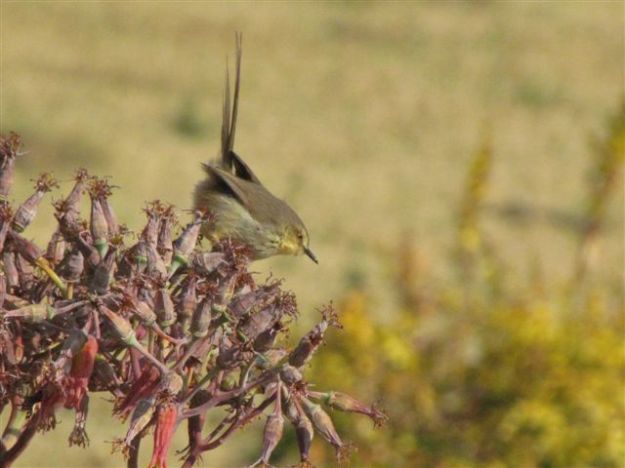
Gurneys Sugarbird
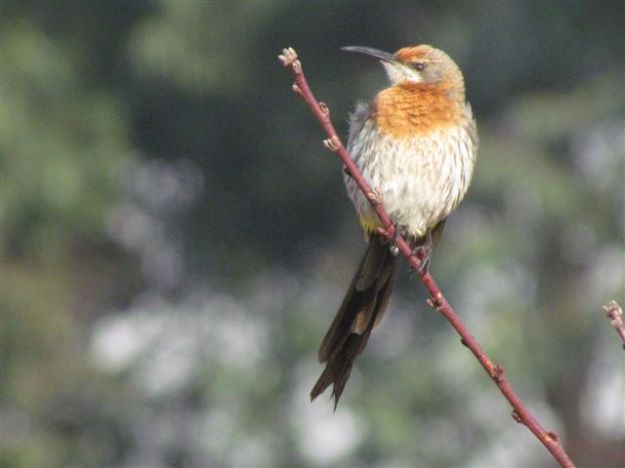
Malachite Sunbird
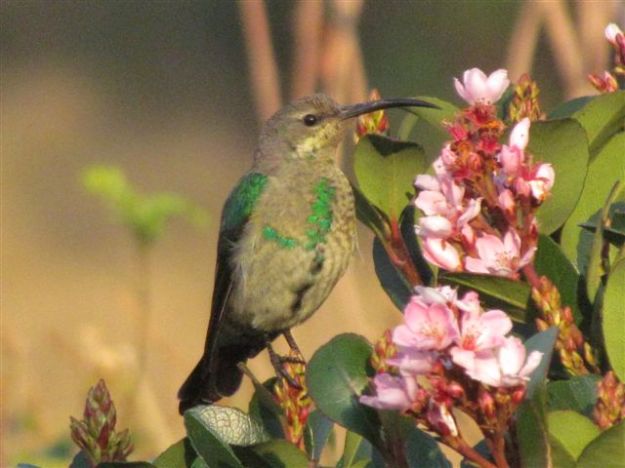
Olive Thrush

Southern Grey-headed Sparrow (passer diffuses)
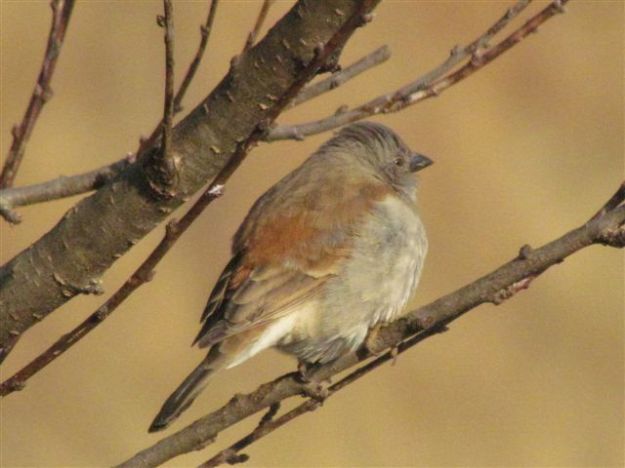
Yellow eyed Canary

Lots of scat amongst the rocks – doe this belong to the wild or Natal Red Hare?

Gilly Robartes – Wana Farm
I’ve been taking pics of this Scadoxus puniceus (I think that’s the correct species) over the last 2 weeks. It was the first one that I saw – since then, loads have popped their pretty little heads up. The dates are shown. It changed quickly over the first few days.
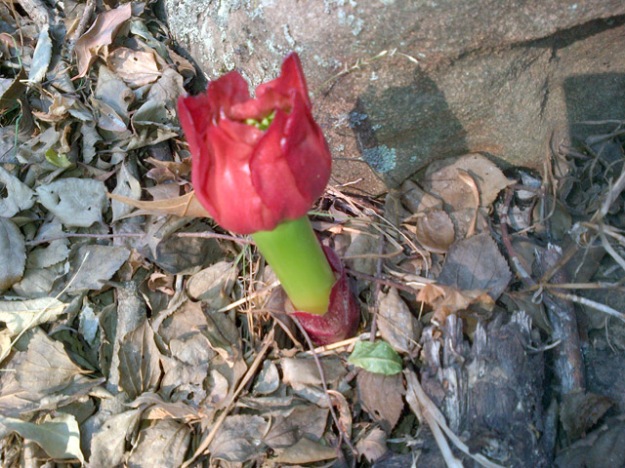
Not the best pics – (with my Blackberry )That’s the best I can do!
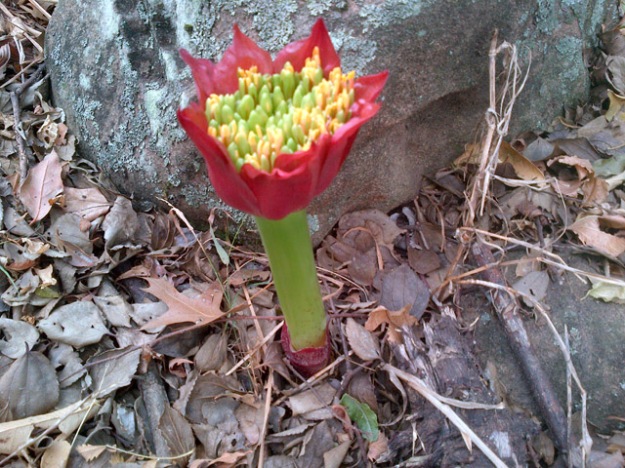
Learn more about Scadoxus https://midlandsconservanciesforum.wordpress.com/2014/08/30/midlands-wildflower-for-august-scadoxus-puniceus/
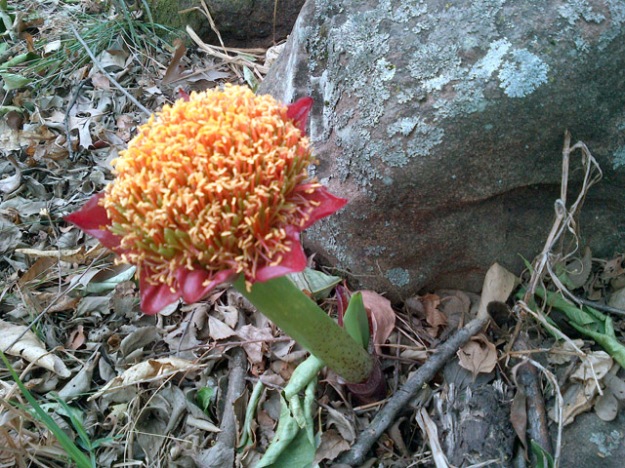
I also saw a little black otter playing in the river. A few others have spotted it, but it’s the first time I have.
Dieter Setz – Wakecroft
The nicest thing about August was the sight of Spring putting and end to Winter…

The resident pair of Egyptian Geese are also happy about the end of winter
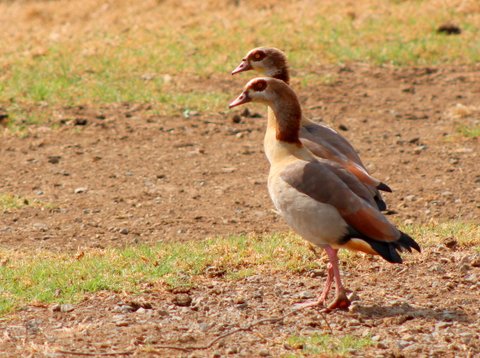
A Raven also “changed his tune” sitting on the fence outside my studio window
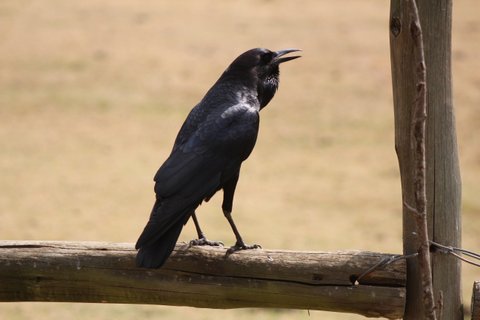
Charles Robinson – Hebron Nguni Farm
Buck sighting was on 2nd September 2014 100metres from the main house around 9am.
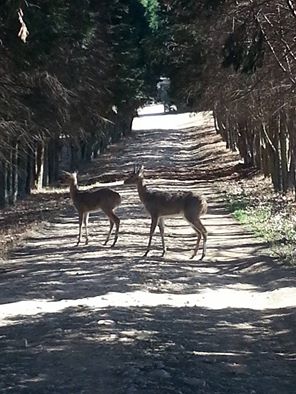
Reedbuck along Petrus Stroom road, taken on cell phone.
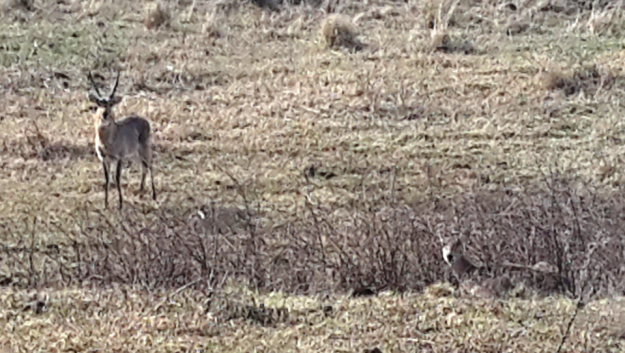
There is also a pair of Owls, sighted on the Hebron Nguni farm, but not photographed. They do not yet seem to have a nest, should we put an owl nest up? Ed’s note: Come to Shane McPherson’s talk on 5 November at Tanglewood – he has just started an owl box project.
Please can you advise, we at Hebron Nguni farm have a monkey problem, who can we talk to for advice? Nikki suggests the following reading:
Kathy Herrington and Wayne Lourens – Aloe Ridge
Kathy writes: Whilst enjoying an early evening walk – I heard our ridgeback Murray excitedly barking and turned back to investigate. There was a cacophony in on the edge of some tall grass – a growling, thumping and loud crackling noise which I had not come across before. On getting closer I saw a very large porcupine, holding his head very low and growling/howling, whilst thumping hard with the front paws and rattling his considerable quills. Our other dogs then appeared and our ridgeback and german/belgian shepherd withdrew circumspectly, as they have had (painful) experience with this species before! I only had to remind our intrepid jack-russell type hound to stay back, whilst I attempted to take a slightly closer photograph of the spectacular animal using my phone, for the Dargle sightings!
I approached a couple of steps talking quietly in what I hoped would be a reassuring manner – but my ‘animal whispering’ is clearly not up to scratch, as he/she took one look at me – growled and charged – leaping forward and spinning to show off the fearsome array of very sharp quills. Suffice it to say, I withdrew hurriedly and assured the beast that taking clear photos was not THAT important. I, and the dogs, then continued on our perambulation and left the porcupine to its own devices.
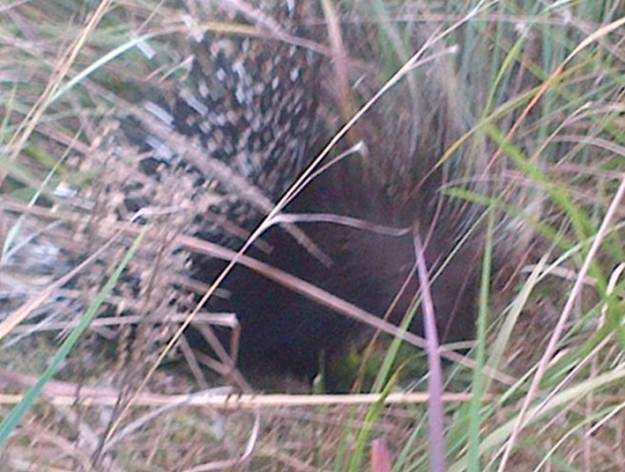
Wayne writes:
Just after 8am on the morning of 22nd August, Kathy and I were on our way to Mount West with our two young horses for a Classical Equitation Clinic held by our German friend, when, with the horse trailer in-tow behind the Land Rover Defender (Kathy in with the 2 young horses on the dirt roads to keep them settled), right in front of me on the Hopedale main access road, was a Serval. Completely owning the roadway and parts of the verge!! Hoping Kathy was looking out of the horse trailer window, I gestured for her to look, and at the same time I grabbed my phone camera. So, while creeping along at the sedate pace that was suitable for the young horses on bumpy roads, I followed the Serval as it made its way along the roadway just ahead, not in the least bit intimidated by the looming Land Rover and horse trailer. At the same time I managed, with one hand on the wheel keeping the Defender & horse trailer on the best parts of the road, and the other setting up the camera on the mobile phone, and managed to take a few shots of the Serval as it sauntered down the roadway for about 100 metres, between 5 metres and 10 metres ahead of us. To me it seemed as though it was a sub-adult female, but that was just my intuition at the time. She playfully tapped at pieces of larger stone aggregate on the roadway along the way, and eventually found an interesting run, probably made by the resident flock of Spurfowl (formerly known as Natal Francolin), down which she disappeared from my view.
